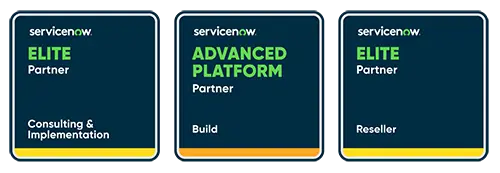Purchasing and implementing IT Service Management (ITSM) systems require significant time and financial investments. This commitment necessitates extensive preparation and an ability to adjust to new technologies.
However, many organizations do not adequately prepare for the transition and struggle through a mistake-riddled installation phase. Management and IT teams should consider an ITSM implementation plan to combat these challenges and promote a smoother digital transformation.
What is ITSM?
ITSM, or Information Technology Service Management, refers to actions targeted at managing IT services and supporting users to meet their IT requirements. In response to users' growing needs, the progressive nature of ITSM digitization expands the product offering and improves the functionality of existing solutions daily.
ITSM implementation plan: five steps
1. Design a strategy before the purchase
All ITSM tools and solutions are not created equal, so management should make a plan before deciding on and purchasing a platform.
For example, the chosen ITSM software should operate with any DevOps (development operations) and agile frameworks associated with legacy systems. Management should examine current ITSM activities and consider the impact of integrating the new technology.
During this period, IT teams might take the following steps:
- Establish baseline expectations for the requirements of implementing new ITSM technology
- Consider the dependencies and integration with other technologies
- Identify how these financial commitments and investments better the company and end-user experiences
- Determine the cost of deploying and operating the new technologies
2. Promote service desk training and knowledge management
Service desk analysts should have a thorough understanding of their services and the required tools. This knowledge base includes understanding the tool basics and the techniques and approaches that enable them to do their job more efficiently.
Organizations can provide this knowledge by:
- Creating a knowledge management platform that allows your service desk analysts to handle the remaining volume better by searching the database for solutions
- Providing and accurately maintaining in-house training courses
- Investing in customer self-service solutions that create tickets automatically, reducing contact volume
3. Automate to handle future occurrences
ITSM management is an ever-evolving process in which new technologies might impact current strategies. Because human resources and business procedures are not necessarily in place before these deployments, anticipating and resolving potential problems with these new technologies might be difficult. Developing an automation solution to address a variety of future scenarios might lessen the need for manual problem management efforts in these instances.
4. Monitor for ongoing improvements
Successful ITSM adoption necessitates constant identifying and evaluating essential success metrics, such as key performance indicators (KPIs). Business processes evolve as ITSM progresses, and management should monitor and adjust its strategies based on ITSM implementation performance to account for these ongoing changes.
This proactive approach should be most effective, make the transition easier to manage, and might include the following steps:
- Document feedback to promote ongoing improvements at every stage of the ITSM journey. The input should be quantitative and accurately reflect costs, business effects, and the overall customer experience
- Recognize the KPIs linked to the end-user experience and make business decisions based on those metrics that best capture the impact of even small changes in ITSM projects
- Assign one or more staff to guarantee that service quality is improved. Employees might also share the position of “service improvement manager” within their respective departments or functions
5. Apply DevOps as an ITSM best practice
DevOps aligns with a continuous improvement methodology spanning incremental changes in development feature testing, release, and deployment. Organizations can similarly approach ITSM implementation by:
- Outlining the ITSM implementation project's endgame
- Identifying and measuring the vital success criteria regularly
- Creating a feedback loop to augment implementation progress according to end-user feedback
- Using ongoing integration, delivery, and deployment approaches to increase service quality and decrease waste
Design the best ITSM implementation plan for your business
As business conditions and technological landscapes change, current ITSM solutions may become less effective or fail to meet future requirements. The way businesses operate and consume IT services will continue to be disrupted by digital transformation. The overall goal of any ITSM implementation project should be to minimize disruptions while utilizing cutting-edge technologies and IT services. With Cask as your ITSM implementation partner, you can reach this goal.
We’re with you for what comes next
You're working in a rapidly shifting environment.
Global dynamics, AI advancements, heavy competition–the only certainty is change.
We get it. And we’re here to help you harness the full potential of ServiceNow to simplify transformation.
Let's navigate the future together.

Optimize IT with a strategic ITSM plan
Master IT service management implementation with Cask’s expertise. Craft a strategy to enhance IT services and drive innovation with transformational technology.
We’re with you for what comes next
You're working in a rapidly shifting environment.
Global dynamics, AI advancements, heavy competition–the only certainty is change.
We get it. And we’re here to help you harness the full potential of ServiceNow to simplify transformation.
Let's navigate the future together.

Recommended articles
LET'S INNOVATE
Book a conversation
Cask expertise, on tap, to understand and align to your unique challenges and desired outcomes. Our team will contact you to better understand your needs and set up a meeting with Cask advisors, aligned to your goals.
